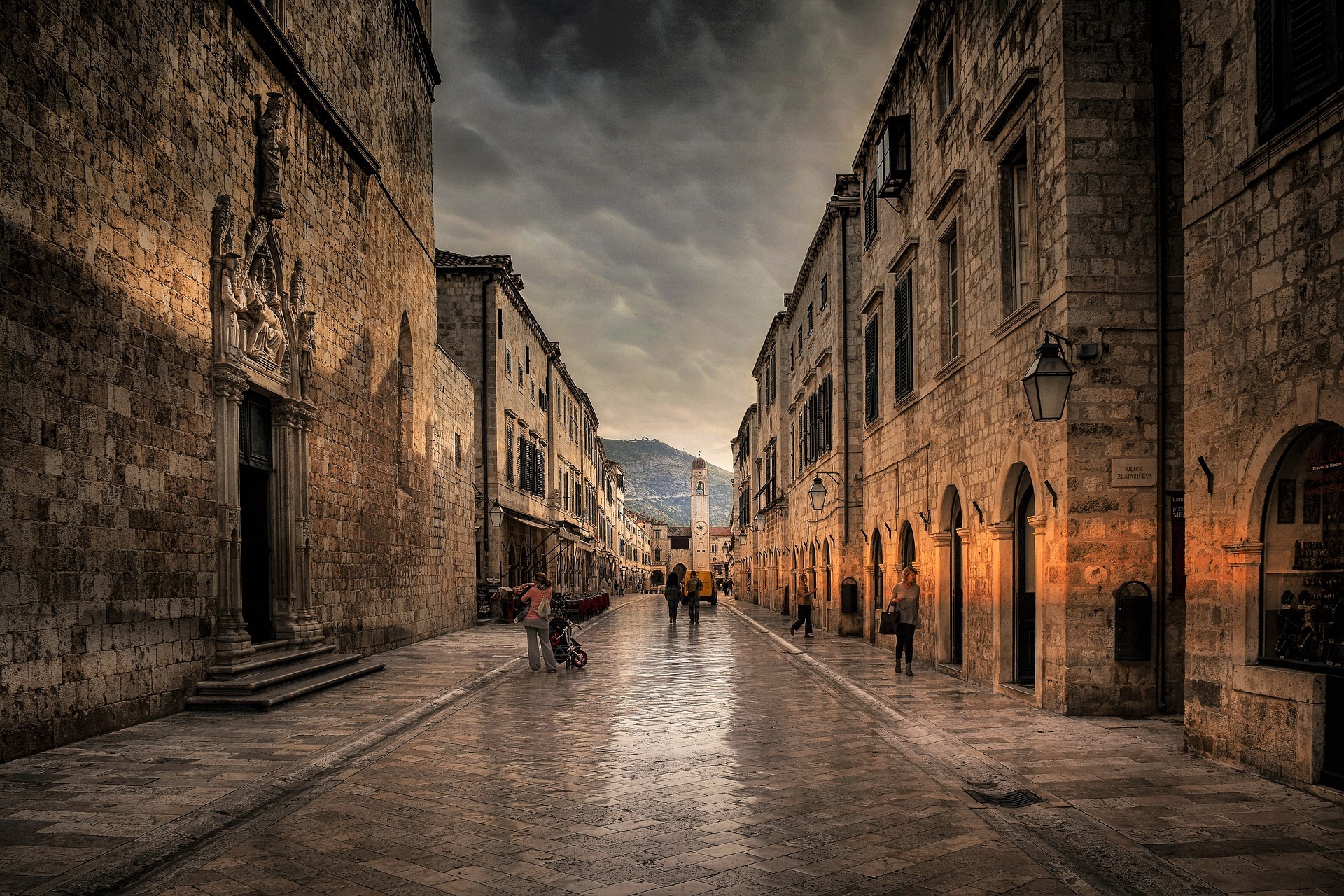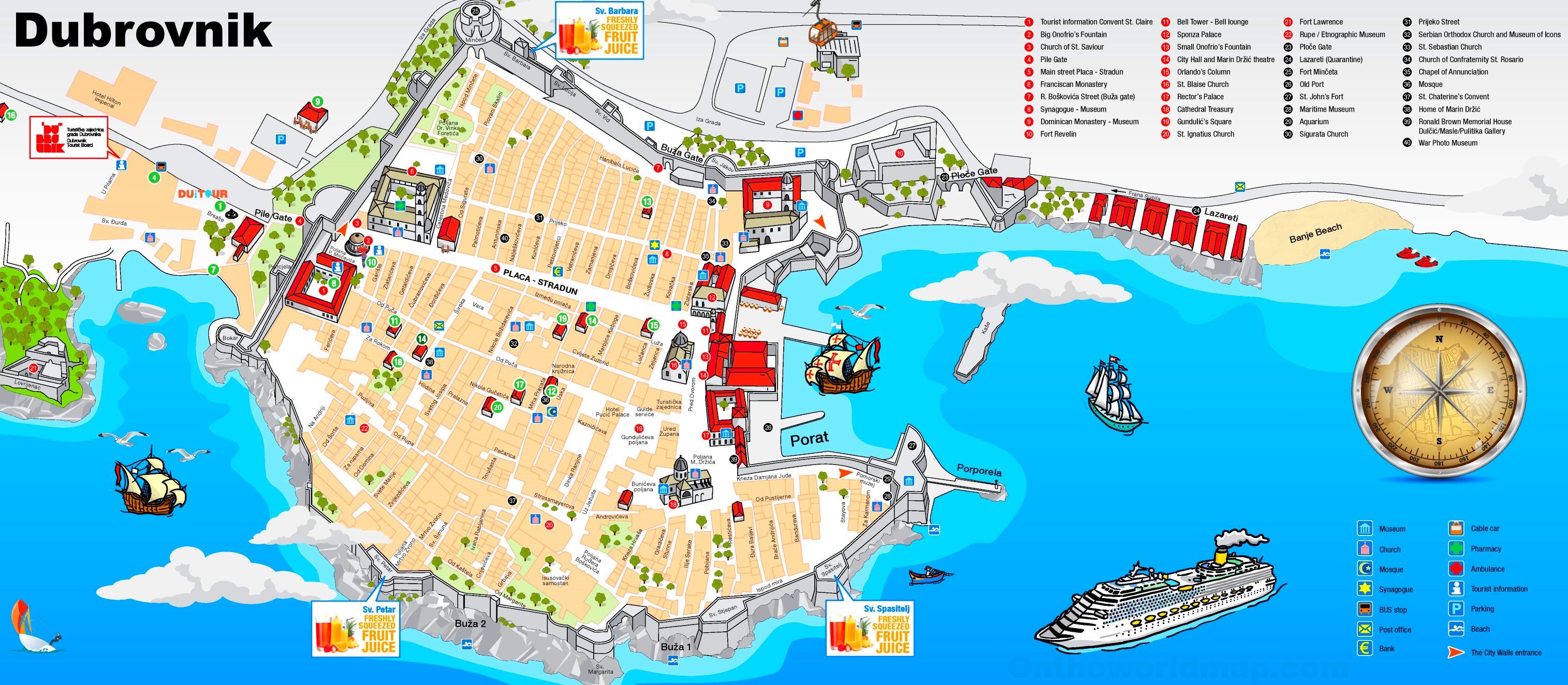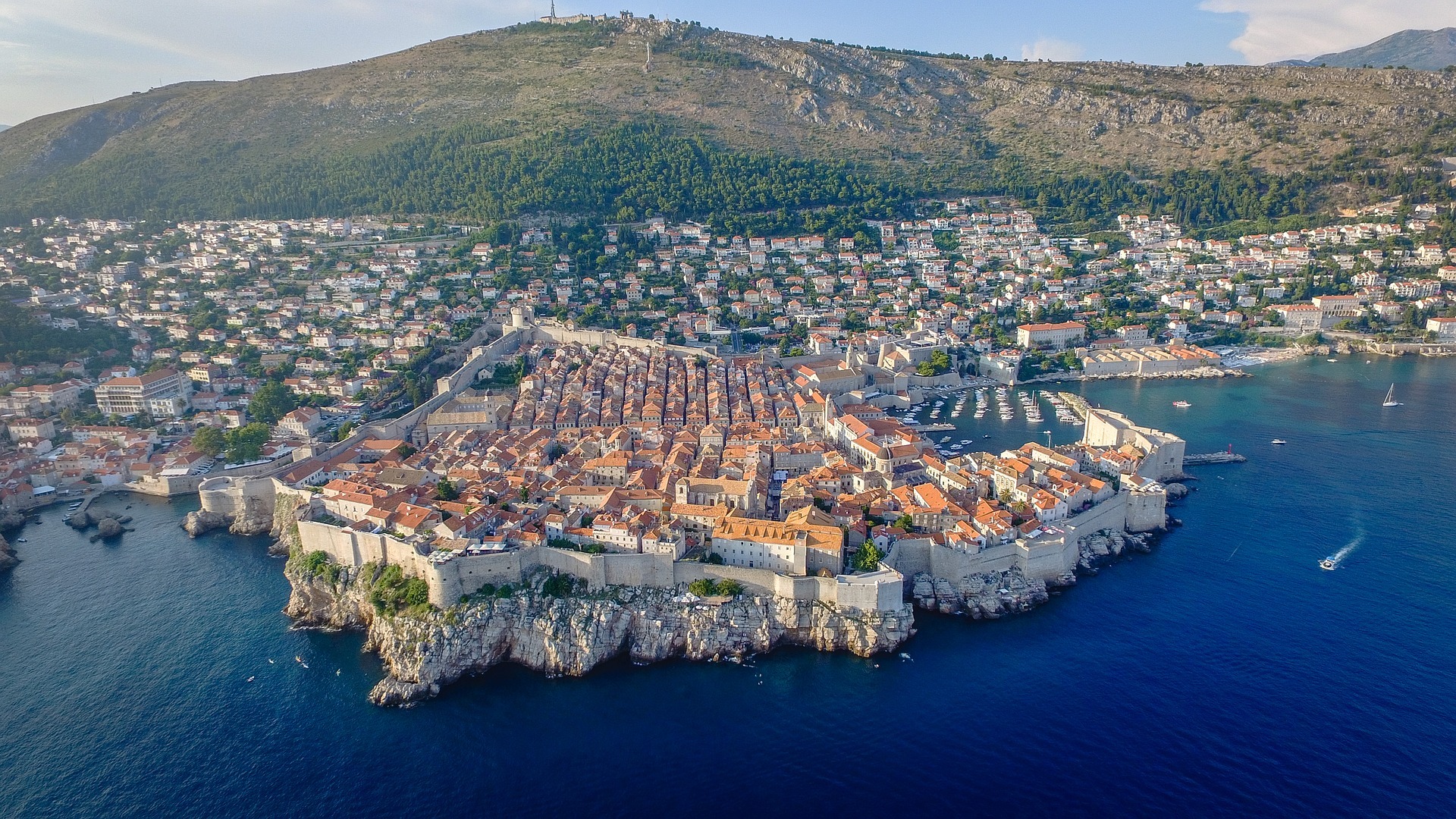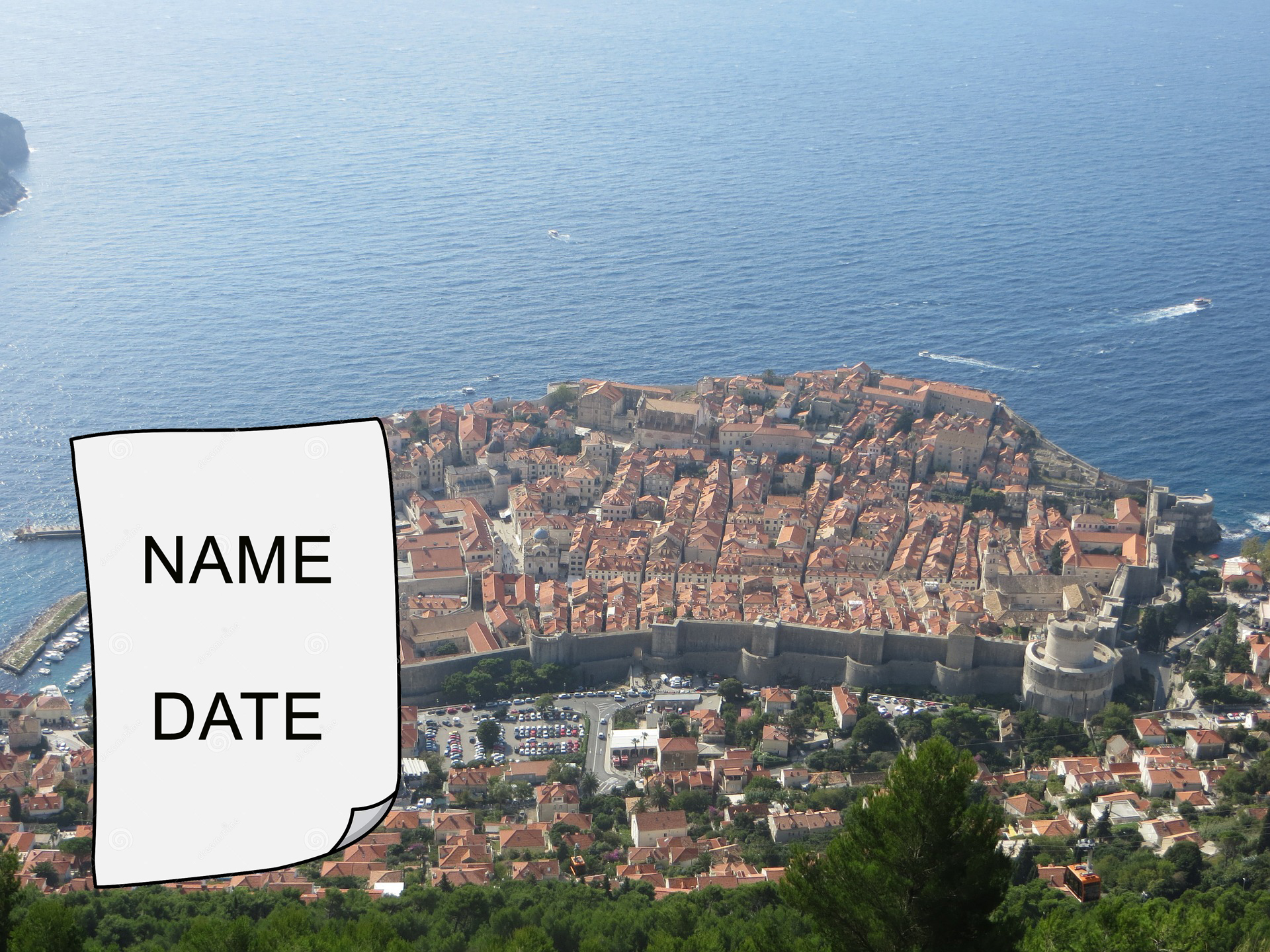Virtual Rewards 2.0 - 2019/2020
This Virtual Cache is part of a limited release of Virtuals created between June 4, 2019 and June 4, 2020. Only 4,000 cache owners were given the opportunity to hide a Virtual Cache. Learn more about Virtual Rewards 2.0 on the Geocaching Blog.

Pogled na Dubrovnik
Lijepih je krajeva mnogo na zemlji, ali Dubrovčani vjeruju da je njihov najljepši. Toplo južno podneblje, prozračno plavo nebo, smaragdno zelene i tamnoplave prebistre morske dubine na rubnom dodiru kamenih obala razlijevaju se po brojnim dragama i uvalicama, po pješćanim plažama i strmim hridinama okićenim najbujnijim ruhom mediteranske i suptropske flore. Pod blagim izrazito mediteranskim podnebljem, Dubrovnik se i usred zime kupa u moru sunca, rascvjetanih i zrelih naranči i limuna. Ima više od 250 sunčanih dana u godini, s prosječnom godišnjom temperaturom od 17°C , dok je prosječna temperatura u zimskim mjesecima 10°C, aljetna prosječna temperatura oko 26°C. Prosječna je ljetna temperatura morske vode oko 21°C. Sezona kupanja na otvorenim prostorima počinje već u travnju, ponekad i prije, i traje sve do kraja listopada, pa i kasnije, dok je u mnogim hotelima u natkrivenim bazenima kupanje moguće tijekom cijele godine. Dubrovnik i njegovo područje obuhvaćaju krajeve najjužnijeg dijela Republike Hrvatske i njezine pokrajine Dalmacije, od Neuma na zapadu, do Sutorine i Ponte Oštre na istoku. Sa sjeverne strane ovo područje graniči sa Federacijom Bosne i Hercegovine, a s istočne s Republikom Crnom Gorom. Ovaj izduženi, relativno uski,priobalno kopneni pojas u podnožju krških dinarskih ogranaka i nevisokih planina proširuje se na istoku u manje krško Konavosko polje, pa obuhvaća i planinu Sniježnicu s čitavom brdskom površinom i tu najdublje ulazi u kopneni dio. U drugom dijelu područja granična linija prema Hercegovini, a djelomično i prema Crnoj Gori, ide vrhovima brda i ponegdje dolazi na svega nekoliko stotina metara od mora (Duboka Ljuta). Grad Dubrovnik nalazi se pod zaštitom UNESCO-a.
Povijest
Nekoliko tisuća godina prije Krista, prema nekima 6000 g., a prema nekima 3000 do 2000 g. prije Krista, odvijao se život na području bliže okolice Dubrovnika. Postanak grada gubi se u mutnim tokovima povijesti, legende se prepliću s povijesnim činjenicama, a sačuvanih zapisa iz tih pradavnih vremena i nema, ili ih ima toliko malo, da ostaje još mnogo posla i povjesničarima i arheolozima da rasvijetle mnoge pretpostavke o postanku Dubrovnika. Jedno je sasvim pouzdano – Dubrovnik je stari grad, na tim svojim kamenim strminama podiže se već najmanje 14 stoljeća. Prethodio mu je još mnogo stariji grad Epidaurum, koji se razvijao na mjestu današnjeg Cavtata, 18 km jugoistočno od Dubrovnika. Epidaurum je do trenutka svoje propasti u 7. st postojao najmanje deset a možda i više od 12 stoljeća. Prema nekim tvrdnjama osnovali su ga Grci već u 7. st. prije Krista. U sudaru epoha i naroda zbrisan je stari antički grad Epidaurum, a njegovo malobrojno stanovništvo potražilo je zaklon u bližoj okolici, današnjoj Župi Dubrovačkoj, gdje su tada postojala utvđena naselja Spilan i Gradac (Burnum) i na stjenovitom otočiću Laus, također naseljenom, koji je tako nastao prva jezgra starog Dubrovnika. Ubrzano naseljavanje Lausa početak je razvitka novoga grada, današnjeg Dubrovnika (7. st.), koji će tu, na tom malom stjenovitom prostoru, pustiti svoje najdublje korijene i u stoljećima koja će burno teći graditi svoju blistavu i herojsku povjesnicu. Tijekom 7. st. slavenska plemena, među kojima su znatno premoćniji Hrvati, već su trajno naselila veći dio istočne jadranske obale, osim malog broja utvrđenih romanskih gradova koji su sve više postajali etnički otoci u poplavi slavenskog stanovništva. Usporedo s razvitkom grada sa romanskim stanovništvom razvija se u neposrednoj blizini Ragusiuma, podno brda Srđa i naselje nazvano hrvatskim imenom Dubrovnik. Ime je dobilo po hrastovim šumama koje se i danas u ovom kraju zovu dubrave. Tijekom 10. i 11. st. morski tjesnac između dva naselja zbog naplavina postajao je sve plići i na kraju je zasut. Kad su najzad krajem 12. st. oba već spojena naselja utvrđena i opkoljena u istim bedemima, dobio je Dubrovnik, stari dio grada, svoje urbane konture sačuvane sve do danas.
Quelle: https://visitdubrovnik.hr/hr/

ENGLISH
VIEW OF DUBROVNIK
There are many beautiful places in the world, however the people of Dubrovnik claim their city to be the most beautiful. A warm southern climate, spacious blue skies, emerald green and dark blue crystal-clear sea touching the rocky shore and spilling into numerous coves and bays, onto sandy beaches and steep reefs decorated with the lushest Mediterranean and subtropical flora. Under the mild Mediterranean climate, Dubrovnik is bathed in a sea of sun, blossoms and ripe orange and lemon tree fruit, even in the winter months. There are more than 250 sunny days per year, the average annual temperature is about 17°C, with the mean winter and summer temperatures being 10°C and 26°C respectively. The average summer sea temperature is about 21°C. The swimming season in the sea begins as early as April, sometimes even earlier, and lasts until late October, while swimming in indoor hotel pools is available year round. Dubrovnik and its surrounding areas cover the southernmost region of the Republic of Croatia and its Dalmatian province, from Neum in the west to Sutorina and Ponte Ostre in the east. The region borders with the Federation of Bosnia and Herzegovina to the north and the Republic of Montenegro to the east. This long, narrow coastal belt under the Dinaric mountains and low mountain peaks spreads to the east in the Konavle Polje (Fields), and includes Sniježnica Mountain and its mountainous region, it being its most inland point. One side borders with Herzegovina, the other with Mo
History
The City of Dubrovnik is under UNESCO protection. According to records, the area around Dubrovnik was first inhabited somewhere between 6000 and 2000 BC. The existence of the city was lost in the cloudy course of history, with legend and historical facts being meshed together. The lack of any preserved documents makes the whole pinpointing process harder, and the few historians that are researching this topic are left with the task to distinguish fact from fiction. What is certain is that Dubrovnik is an old city, persevering on its stony cliffs for at least 14 centuries. An even older city, Epidaurum, predates Dubrovnik, being located where the city of Cavtat now lies, about 18 kilometres southeast of Dubrovnik. At the time of its destruction it had endured for at least 10 to 12 centuries. Again, historians cannot be sure. Some believe that the Greeks founded the colony around 600BC. With the city destroyed, a number of its inhabitants fled to neighbouring regions (today’s Župa Dubrovačka), where the fortified cities of Spilan and Gradac (Burnum) were inhabited, as well as the rocky islet of Laus, which became the first city core of old Dubrovnik. The rapid settlement of Laus resulted in the development of a new city, today’s Dubrovnik (in the 7th century) which would, on that small rocky area, grow deep roots and build a glorious and heroic history in the stormy centuries to follow. During the 7th century, the Slavic tribes, with Croats being one of the superior ones, had already set up permanent residences along the majority of the eastern Adriatic coast, with the exception of a few fortified Roman cities, which were becoming cut off from the rest of the empire in the wake of this rapid Slavic population. In comparison to the development of cities with a Roman population, a settlement was developing near Ragusium, at the foothills of Mount Srđ, which received the Croatian name Dubrovnik. The name came from the oak forests which even today are called “dubrave” today. During the 10th and 11th century, the sea strait between the two settlements became shallower due to alleviation, drying up completely at the end. When the two settlements, already joined together, were fortified and strengthened within the same city walls at the end of 12th century, the result was the Old Town of Dubrovnik, an urban centre preserved to the present day.

GERMAN
BLICK AUF DUBROVNIK
Es gibt viele schöne Regionen auf dieser Erde, aber die Dubrovniker sind davon überzeugt, dass ihre am schönsten ist: südliches, warmes Klima, durchsichtiger blauer Himmel, kristallklares, smaragdgrünes bis tiefblaues Meer vor der Steinküste, viele große und kleine Buchten mit Sandstränden, steile Felsen, angetan mit dem üppigsten Gewand mediteraner und subtropischer Flora. In dem sanften, ausgesprochen mediteranen Klima badet Dubrovnik auch mitten im Winter in einem Sonnenmeer und in blühenden und reifen Orangen und Zitronen. Es gibt mehr als 250 Sonnentage im Jahr mit einer Jahresdurchschnittstemperatur von 17° C. Die durchschnittliche Temperatur in den Wintermonaten beträgt 10° C und die durchschnittliche Temperatur der Sommermonate etwa 26° C. Die durchschnittliche Sommertemperatur des Meeres liegt bei 21° C. Die Badesaison im Freien beginnt bereits im April, manchmal auch früher und dauert bis Ende Oktober oder später. In vielen Hotels ist das Baden in Hallenbädern das ganze Jahr über möglich. Dubrovnik und seine Region umfassen die südlichsten Gebiete der Republik Kroatien: die dalmatinischen Gebiete von Neum im Westen bis Sutorina und Ponte Ostra im Osten. Im Norden grenzt dieses Gebiet an die Föderation Bosnien und Herzegowina und im Osten an die Republik Montenegro. Dieser lang gestreckte, relativ schmale Festlandküstengürtel am Fuße der karstigen Dinaridenausläufer und der nicht sehr hohen Gebirge weitet sich im Osten zum weniger karstigen Feld Konavosko polje aus, umfasst das Snijeznica-Gebirge in seiner gesamten Fläche und reicht hier am tiefsten in den Festlandteil hinein. Im anderen Teil des Gebietes verläuft die Grenzlinie zur Herzegowina und teilweise zu Montenegro über die Berggipfel und kommt an einigen Stellen bis auf einige hundert Meter an das Meer (Duboka Ljuta) heran. Die Stadt Dubrovnik befindet sich unter dem Schutz der UNESCO.

Vaš zadatak / Your task / Deine Aufgabe
CRO: Fotografirajte s terase s pogledom na Dubrovnik. Držite komad papira s vašim imenom i datumom na slici. Mora se jasno pročitati. Dobrodošli ste i na selfie s plahtom s pogledom na Dubrovnik.
E: Take a photo from the terrace overlooking Dubrovnik. Hold a piece of paper with your name and date in the picture. It must be read clearly. You are also welcome to take a selfie with the sheet overlooking Dubrovnik.
D: Mach ein Foto von der Terasse aus mit Blick auf Dubrovnik. Halte einen Zettel mit Namen und Datum in das Bild. Es muss deutlich zu lesen sein. Du kannst auch gern ein Selfie mit dem Blatt mit Blick auf Dubrovnik machen.

Bildquellen: Pixabay